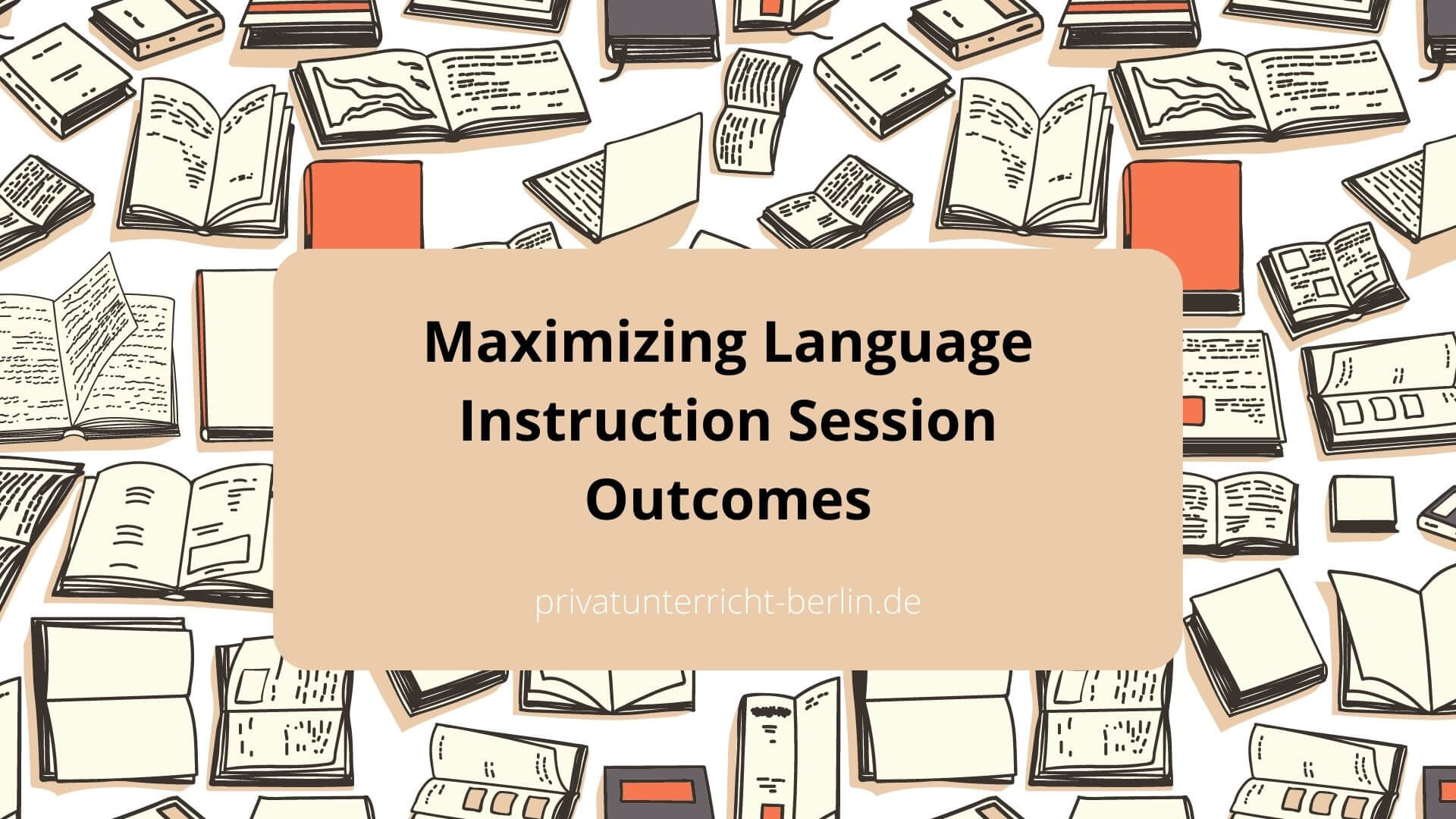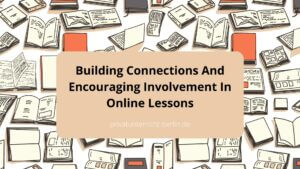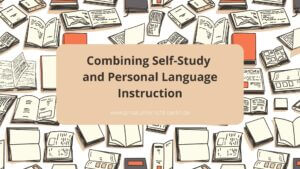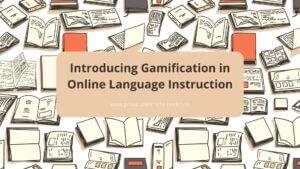Your Language Journey, Your Way: Start with a Private Tutor

Maximizing Language Instruction Session Outcomes
Are you tired of feeling like your language instruction sessions are not producing the outcomes you desire? As a language instruction outcomes specialist, I understand that maximizing session outcomes is crucial for success in learning a new language. By implementing specific strategies and techniques, you can increase the effectiveness of each session and progress toward fluency faster.
The key to maximizing language instruction session outcomes is to focus on quantity and quality. Setting achievable goals for each session is essential while ensuring that the time spent in each session is productive and meaningful.
In this article, I will provide practical tips for structuring effective language instruction sessions that will help learners achieve their desired level of proficiency more quickly than ever before.
Table of Contents
Setting Achievable Goals For Each Session
Do you want to avoid language instruction sessions that feel like a waste of time? Do you leave each session feeling frustrated and unaccomplished? It’s time to take control of your learning experience by setting achievable goals for each session. Goal setting helps you stay focused and provides a roadmap for progress tracking.
As a language instruction outcomes specialist, I’ve seen firsthand the power of goal setting in maximizing session outcomes. When students set clear, measurable goals at the start of each session, they are more likely to achieve those goals and feel a sense of accomplishment. This positive feedback loop keeps motivation high and leads to faster progress in language acquisition.
So don’t let another session go by without taking charge – set achievable goals and watch your skills soar!
When it comes to structuring effective lesson plans, certain vital elements must be considered. One crucial factor is pacing – lessons should be structured with enough time for review and practice while introducing new material. Additionally, lesson plans must be tailored to individual student needs and learning styles. By carefully considering these factors, instructors can create engaging and effective lesson plans that maximize language instruction session outcomes.
Structuring Effective Lesson Plans
Lesson plan structure is an essential component of maximizing language instruction session outcomes. Effective techniques involve breaking down the learning objectives into minor, manageable pieces and planning activities that engage learners differently.
One key to structuring effective lesson plans is, to begin with, a clear objective for each session. This objective should be specific, measurable, achievable, relevant, and time-bound (SMART).
Once this has been established, it’s essential to determine how best to deliver the content. Using visuals such as videos or images can help convey information more clearly than just using text alone. Additionally, incorporating interactive elements like games or group work can make lessons more engaging for students and improve material retention.
Incorporating interactive activities into your lesson plan helps keep students engaged and provides opportunities for them to practice their language skills in real-world scenarios. By utilizing role-playing exercises or discussions on current events, instructors can create meaningful interactions between students while reinforcing vocabulary and grammar concepts.
In the subsequent section, we will delve deeper into some strategies for integrating interactive activities into your lesson plans without detracting from the intended learning outcomes.
Incorporating Interactive Activities
As we learned in the previous section, structuring effective lesson plans is crucial to maximizing language instruction session outcomes. But simply having a well-planned lesson isn’t enough – learners need engaging activities to practice and apply what they’ve learned.
This is where incorporating interactive activities comes in. Role-playing is an excellent way for learners to implement their language skills. Students can practice using new vocabulary and grammar structures in real-life situations by taking on different personas and scenarios. Group projects are another great option, allowing learners to collaborate while practicing communication skills.
These interactive activities make learning more enjoyable and provide opportunities for meaningful interaction and feedback from peers and instructors. Speaking of feedback, providing constructive criticism is essential to helping learners improve their language abilities. In our next section, we’ll explore how teachers can give feedback that helps students identify areas for improvement without discouraging them or causing frustration.
Providing Constructive Feedback
As language instructors, it’s important to provide constructive feedback that helps our students improve their language skills. One way to do this is by creating opportunities for them to practice using the language in a supportive environment. This can be done through group discussions or one-on-one conversations where students are encouraged to speak freely and receive feedback on their pronunciation, grammar, and vocabulary.
Effective communication is critical when providing feedback, as it helps students understand what they’re doing well and what needs improvement. Here are three tips for giving effective feedback:
- Be specific: Instead of saying ‘Good job,’ tell your student exactly what they did well. For example, ‘You used the past tense correctly in that sentence.’
- Use positive reinforcement: Focus on what the student did well before highlighting areas that need improvement. This creates a positive learning environment.
- Provide actionable steps: Clear instructions on improving the student’s language skills. For example, ‘Try practicing these irregular verbs every day.’
Creating opportunities for practice and providing effective feedback will help maximize language instruction session outcomes. However, encouraging consistent practice and review outside of class is equally important. Let’s explore some strategies for achieving this goal in the next section.
Encouraging Consistent Practice And Review
As language learners, the key to success is consistency. Without practice and review, progress is slow and frustrating. Therefore, keeping motivated is essential to maximizing your language instruction session outcomes.
One way to stay motivated is by setting achievable goals for yourself. This can be as simple as committing to practicing 10 minutes daily or mastering a specific grammar concept within a week. Rewarding yourself when you reach these milestones will also help keep you on track.
Additionally, finding ways to make learning fun and enjoyable, such as incorporating music or watching movies in the target language, can prevent burnout and increase motivation.
To reinforce learning, it’s essential to review previously learned material regularly. This helps with retention and allows learners to build upon their existing knowledge. Flashcards, online quizzes, and conversation practice effectively reinforce vocabulary and grammar concepts.
Consistently reviewing materials from previous lessons before starting new ones can improve overall comprehension and reduce confusion during future sessions. By prioritizing consistent practice and regular review, language learners can maximize their instructional outcomes and achieve their language goals efficiently.
Frequently Asked Questions
How Can I Motivate My Students To Participate Actively In Language Instruction Sessions?
Hey there! As a language instruction outcomes specialist, I’m often asked how to keep students motivated during sessions.
And let me tell you, group dynamics play a huge role. One of the best ways to encourage active participation is through gamification techniques – think about turning to learn into a game with points and rewards.
But it’s not just about making things fun; by tapping into our natural desire for competition and achievement, we can create an environment that fosters engagement and enthusiasm.
So whether you’re teaching beginners or advanced learners, don’t be afraid to get creative with your approach. After all, when it comes to maximizing language instruction session outcomes, anything that gets your students excited and invested in their progress is worth exploring!
What Are Some Strategies For Incorporating Cultural Elements Into Language Instruction?
To truly immerse students in a language, it’s essential to incorporate cultural elements into language instruction.
This can be done through interactive activities such as role-playing scenarios and exploring cultural traditions.
By incorporating these elements, students will not only learn the language but also gain an understanding of its context within a particular culture.
Cultural immersion is critical to maximizing language learning outcomes, as it allows for a deeper understanding and appreciation of the language and the culture it represents.
As language instruction specialists, it’s our responsibility to provide engaging and practical strategies that promote cultural awareness in addition to language fluency.
How Can I Personalize Language Instruction Sessions For Individual Students With Different Learning Styles?
So you’ve got a group of students with different learning styles, and your task is to personalize language instruction sessions for each of them? No problem!
The key here is to make use of visual aids and interactive exercises. For kinesthetic learners, try incorporating games or role-playing activities into the session.
Visual learners will benefit from diagrams, charts, or short videos illustrating vocabulary or grammar concepts.
And don’t forget about auditory learners – they’ll appreciate opportunities to listen to authentic speech samples, engage in conversation practice, or work on pronunciation through repetition drills.
By catering to multiple learning styles, you can maximize outcomes for all your students.
What Are Some Effective Ways To Assess Students’ Progress And Adjust Instruction Accordingly?
Effective language instruction involves using formative assessment techniques to measure student’s progress and adjust instruction accordingly.
Differentiated instruction is essential in addressing individual students with varying learning styles, as it allows for personalized approaches that cater to their needs.
Self-reflection exercises enable learners to evaluate their understanding, while peer feedback sessions provide constructive criticism from classmates.
As a language outcomes specialist, utilizing these methods can boost student engagement and maximize overall session outcomes by ensuring that each student receives the necessary support they require to succeed.
How Can I Address Common Challenges That Arise During Language Instruction Sessions, Such As Language Barriers Or Lack Of Confidence?
As a language instruction outcomes specialist, it’s essential to anticipate and address common challenges during classroom activities.
To create an environment where all students feel confident in their abilities, interactive assessments can be efficient. However, these assessments can become intimidating for some learners when faced with language barriers or a lack of confidence.
To overcome this obstacle, consider incorporating rhetorical literary devices such as analogies or metaphors to help explain concepts in relatable terms. This facilitates understanding and adds depth and complexity to the teaching experience.
Ultimately, by actively addressing potential pitfalls like these, we can maximize language instruction session outcomes and empower our students to succeed.
Conclusion
In conclusion, as a language instruction outcomes specialist, I recommend incorporating cultural elements into your sessions as it helps students learn the language and immerses them in the culture.
Personalization is critical to success; adapting materials to suit different learning styles can help increase engagement and retention of information.
Assessing progress regularly allows for adjustments to be made if needed.
Addressing challenges during sessions, such as language barriers or lack of confidence, requires patience and understanding.
As they say, ‘Rome wasn’t built in a day,’ and neither are language skills.
With consistent effort and motivation, students can achieve their goals and become proficient speakers of another language.



